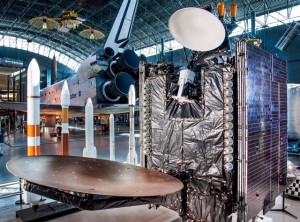I carried out quite exhaustive research into Virtual Private Networks (VPNs) a couple of years ago, and there are a number of providers out there. However, many are fairly new and with limited offerings and track record, whereas Strong VPN has been operating since 1994. Now with a staff of 60 they operate some 440 servers around the world. I signed up for their VPN service 18 months ago and I’m a happy customer!
Do You Use Public WiFi? If so, then you are particularly exposed to being hacked.
Hot Spots can be found everywhere now, which is very convenient but also dangerous. Hot Spot hackers are on the rise and it’s far too easy now for criminals to do. Using a VPN service will significantly improve your computer security and prevent Hot Spot sniffing devices from viewing your logins, passwords and private data.
Use a VPN account to encrypt your traffic while using Public WiFi
Using a VPN account from a trusted VPN service provider is a requirement now when doing any type of online banking or personal business on WiFi hot spot areas. Remember, if you are on a Public WiFi you are passing your traffic along with everyone else on that network. Essentially you are on the same WiFi router. There are many easy-to-obtain tools that can compromise your security. Using a VPN account encrypts all your traffic and will prevent this problem.
If you want to read more about the dangers of Hot Spots and illegal sniffing activity, please read the articles below:
https://usatoday.com/money/industries/technology/2004-04-13-hackers-wireless_x.htm
https://newser.com/story/16605/wi-fi-hotspots-become-hackers-delight.html
http://reviews.cnet.com/4520-3513_7-5630181-1.html
Other Reasons for Using a VPN
Avoid Snooping: A VPN works by “digging a tunnel” between your computer and the VPN’s secure server (which you can choose to be in a different country). This means that there’s an encrypted link between you and the VPN server, so even your Internet Service Provider (ISP) has no visibility of your emails, surfing or other data flowing through the tunnel.
Prevent Attacks:

A VPN can also prevent a direct attack on your computer. Attacks are often directed directly at your known IP address. With a VPN account your home computer IP will not be seen, but the VPN server IP will be. Luckily StrongVPN’s server is behind some of the best known hardware and engineers in the industry who monitor activity diligently and make sure the VPN server is protected.
Online Banking When Overseas: If you travel overseas you know the problems that can be had when trying to order something over the Internet. There are many scripts on the market that will analyze where the order is being placed from. If you are a Expat (Expatriate) living in China for example, and you would like to order something from an e-Commerce site, many times it will be blocked and marked as suspicious activity. This usually means you have to call the credit card company again and again to let them know it’s you and not fraudulent activity.
This also happens when you try to do your online banking from overseas. You need the IP of your home country to safely conduct your private business on the Internet while you are in another country. If e-Commerce and Banking companies see you conduct your banking from a foreign country, there is a good chance your account will be marked for fraud. Use a VPN account to prevent these unfortunate occurrences.
And it’s not just desktop or laptop computers that can have a VPN, there’s protection for mobile devices and iPhones too!
So if you’re concerned about identity theft, the security of your internet connection or anonymity for your online presence, then I most definitely recommend Strong VPN.


